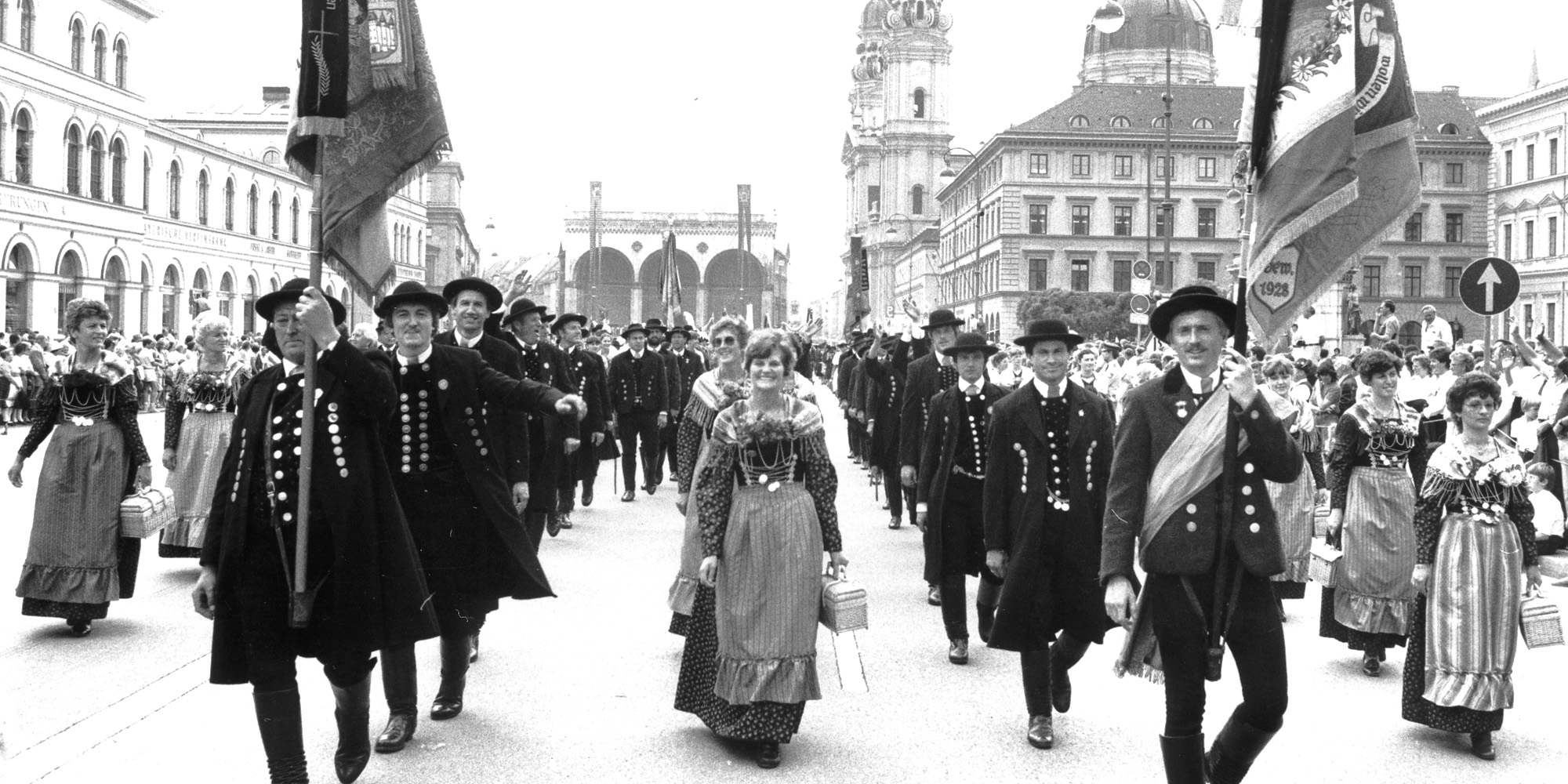
Clothes for hop people
What the Hallertau traditional costume has to do with hops – and what not
The so-called “folk culture” was discovered about 200 years ago. It was mainly discovered by people from the city, the educated, the wealthy. In other words, people who tended to feel that they did not belong to the people. From the outset, it was about having to save something. Old things that were believed to be disappearing, threatened, doomed. Threatened by machines instead of manual labor, by newspapers and telephones instead of oral tradition, fast means of transportation such as the railroad, urbanization, education for all, political participation, etc., etc. The city dwellers willing to save this old culture believed that they could find it primarily in the countryside. It was important that the respective cultural form always had “folk-” or, optionally, “peasant-” attached to it: folk song, folk music, folk tale, folk custom, folk religion – peasant furniture, peasant houses, peasant ceramics. Whatever was meant in detail. And, of course, folk costumes. The term “Tracht” itself indicated that it was not just about clothing. Clothing was dependent on the prosperity of the people, on the climate, on the living conditions. And especially on fashion. With the traditional costume, however, everything seemed different. It expressed something old, traditional, something that was tied to a particular region, something that connected the wearers of the respective costume. Fashion had no place in this, it came from the city.
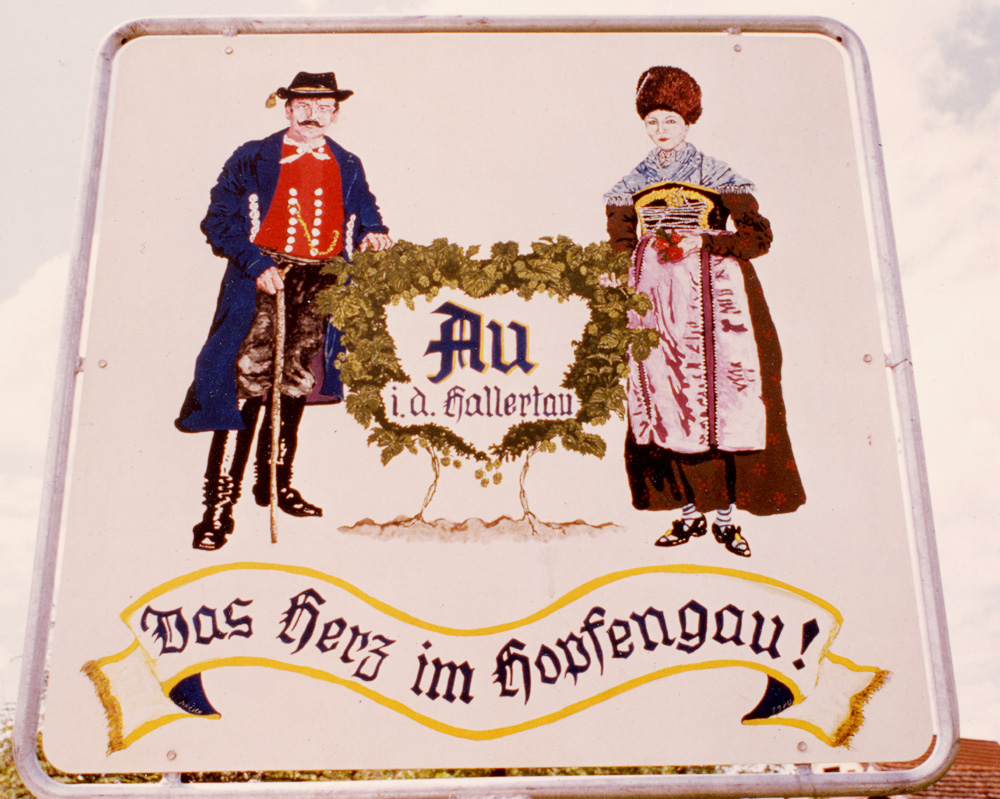
Sign at the entrance to Au i.d. Hallertau, around 1980.
According to this logic, it would have been obvious that there would also be a kind of “hop costume” or at least, depending on the growing area, different hop costumes. But that’s exactly what didn’t exist, and that was simply because the logic of disappearing folk culture was in fact completely illogical.
This is best understood in what is now the largest of all hop-growing areas, the Hallertau. When hops began to become important about 200 years ago, the old way of life here gradually disappeared. Hops were the trigger, the cause, the accelerator of change. Hops were no longer part of traditional agriculture. For centuries, farmers had been concerned with providing for themselves and their surroundings, especially their aristocratic landlords. They produced for their own needs, not for any “market”. The cultivation of hops put an end to such thinking. Hop farmers needed a supra-regional beer and brewing market; after all, they couldn’t eat the green gold themselves. As early as 1860, anyone wanting to profit from the hop gold rush had to be guided by what brewers in Argentina or Russia wanted, or at least in Upper Swabia. At the very least, they had to know a hop merchant who dealt with such things. They also needed a whole range of modern conveniences such as railways, telegraphs, newspapers, pesticides, artificial fertilizers, wooden columns, wire or string, fuel, labor – all things that they could not provide themselves or only with great difficulty.
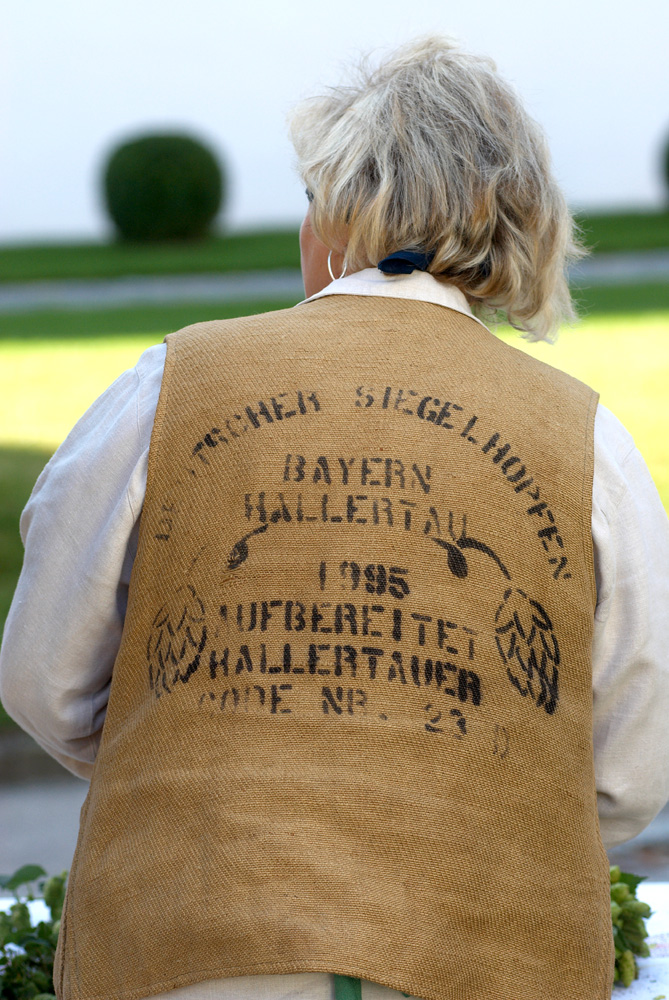
Also a type of “hop costume”: vest in hop sack look
Those who did everything right and also had a good deal of luck could make a lot of money, a lot of money. Hops gold rush, hops roulette, you know the buzzwords. The Hallertauers were lucky again and again, often proved to have the right touch, the right feeling for what was needed. What was particularly tempting about hops was that it was no longer just the wealthy and the well-connected who benefited, as had always been the case. The little man also got his chance with hops. Prosperity for all. At least in theory, as a glimmer on the horizon. A crucial prerequisite was that the promised prosperity definitely benefited their own wallets and not those of some noble landowner. The emancipation of the peasants in 1848 had laid the foundation for this.
Today, we can only guess at the extent to which hops have disrupted the social order in the Hallertau region since around 1850. For the Hallertau priests, for example, who were concerned about morals and customs, hops seemed to trigger Sodom and Gomorrah at the time. Ostentation and gluttony everywhere. The people no longer knew their place, as the hops “exerted the most detrimental influence on the moral state of the community.”
And what does all this have to do with traditional costume? If you read old descriptions from the 18th and early 19th century about the clothing of the Hallertau – at that time mostly not yet referred to as traditional costume – it is noticeable that this clothing by no means presented a uniform picture. The whole thing did not yet have much in common with what is today often referred to as “typical Hallertau traditional costume”. It was only with the increasing success of hops that the appearance changed. Silk waistcoats and dresses, otter fur hoods, long frock coats, pleated boots, chains, watches, silver buttons by the dozen, often as coinage with eyelets for the sake of simplicity. This garb, especially for men, was a huge investment. And it still is today. Those who want to do it right pay thousands. An unmistakable expression of prosperity. And fashion.
In this respect, it seems to have been the case that the traditional costume we now call “Hallertau” only established and solidified with the triumph of hops. So it was precisely what was supposed to have caused the death of the old culture that first gave rise to the typical regional costume. The downfall logic of the bourgeois folk culture saviors was not really logical.
The fact that what was worn as traditional costume in Wolnzach and Geisenfeld actually had more to do with the Dachau region than with the area north of Mainburg fit well into the regional logic, or rather illogic. Because the hops, under the term “Hallertau”, brought together areas of land and thus clothing cultures that had previously had almost nothing to do with each other. The Hallertau was and still is where the hops grow. The inhabitants of Langquaid had little in common with those of Schrobenhausen, and the inhabitants of Nandlstadt had nothing in common with those of Abensberg. Except for the hops.
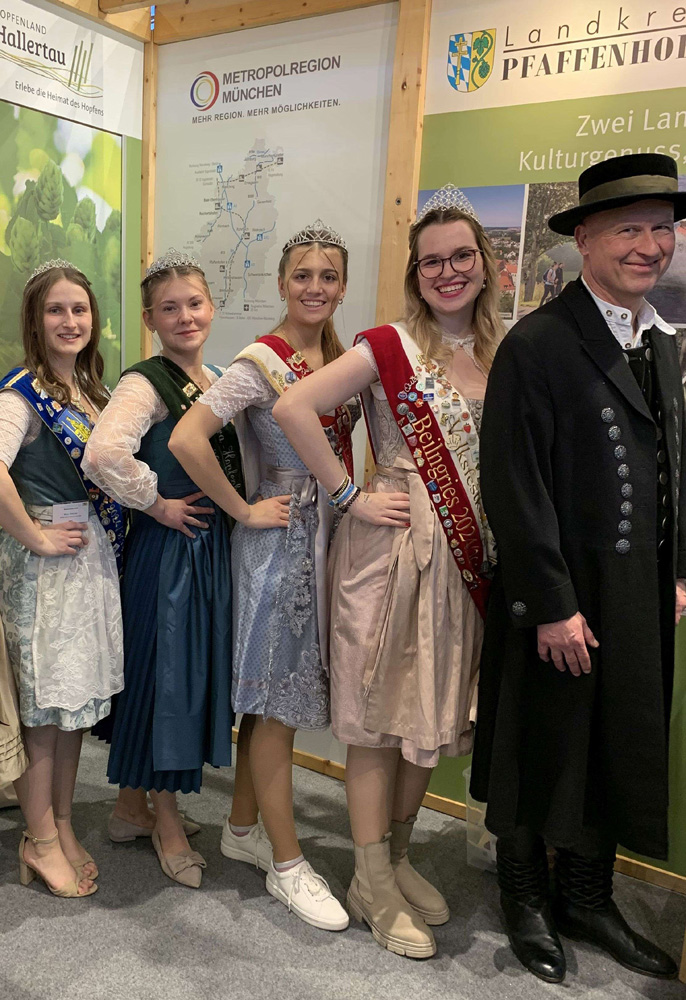
Hallertau traditional costume at the Green Week Berlin, 2025, together with several product queens.
That’s why the Hallertau costume has never been associated with more than just the hop factor of “prosperity”. Even though the external perception has become somewhat more established over time due to things like the Oktoberfest procession or Bavarian television, where the Hallertau costume has appeared again and again. But you would look in vain for hop cones or hop vines as decorative motifs on the traditional costumes. It goes without saying that the lavish traditional costumes never had anything to do with life and work on the hop yard, in the hop garden or on the picking machine. A hop farmer never stood around in his kiln in sinfully expensive pleated boots.
Unlike the traditional costumes from the Oberland, the foothills of the Alps or the Bavarian lakes, the Hallertau costume has so far been able to avoid any kind of contamination. As early as 1900, people wearing traditional costumes from the mountains presented their folklore evenings with Lederhosen and Gamsbart to enthusiastic tourists from near and far. The Schliersee Country Theater traveled directly to the United States in 1895 to present the Americans with their Bavarian decal. The Hallertau costume has not yet had to endure anything like this. If you will, it goes very well with hops. In hop-growing areas, tourism with all its unpleasant consequences has never really been able to take root. So if you really want to experience authentic Bavarian country life, the best place to go is the Hallertau. Visit regional festivals such as the Hop-picking Festival in Siegenburg or the coronation of the Hop Queen in Wolnzach. There you will also see many people in traditional costume, who, however, pay little heed to the guidelines of the tourist board. There isn’t really one here either.
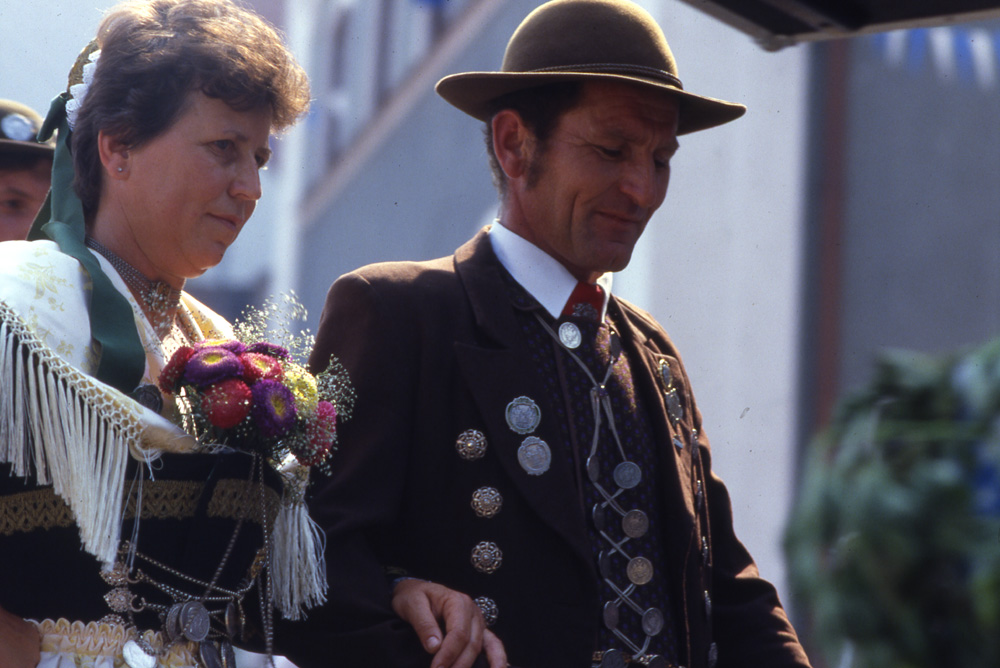
Folk dance in Siegenburg, 1983 (Photo: Peter M. Busler, Munich)
Hallertau traditional costumes have become rare. Perhaps they weren’t as common as some local historians would have us believe. There has never been a kind of Hallertau hop festival where all the hop farmers, male and female, would dress in the same traditional costume. Perhaps it needs some kind of external threat and subsequent rescue attempts. But we can confidently do without both.
Cover picture: The Mainburger Trachtenverein at the traditional costume parade in Munich, 1981 (Photo: Peter M. Busler, Munich).